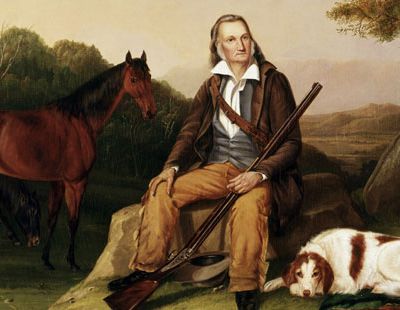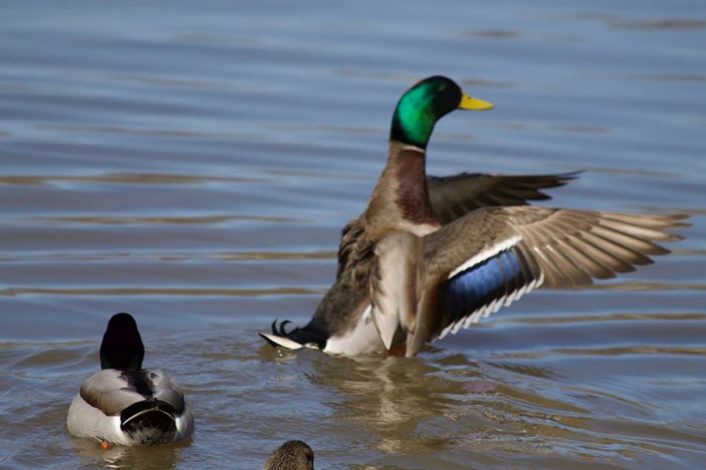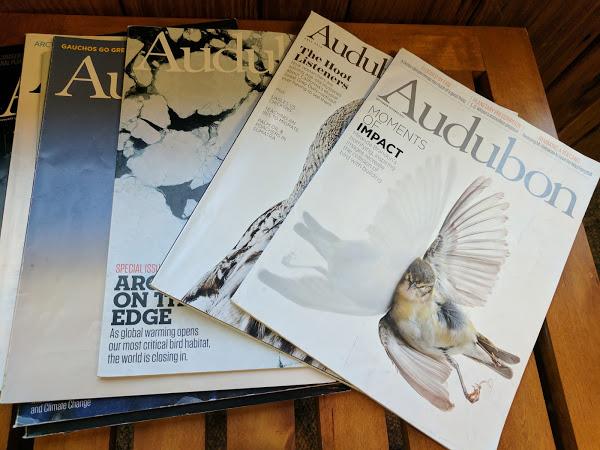Conservationist Series - John Audubon
This is a continuation of our conservationist series. Each post will detail a conservationist’s life, notable accomplishments and ways the conservationist connects to kids. This post features John Audubon.

 A true conservationist is a man who knows that the world is not given by his fathers, but borrowed from his children. (John Audubon)
A true conservationist is a man who knows that the world is not given by his fathers, but borrowed from his children. (John Audubon)
 As I grew up I was fervently desirous of becoming acquainted with Nature. (John Audubon)
Do you have a favorite conservationist? Did John Audubon inspire you? Let us know in the comments
As I grew up I was fervently desirous of becoming acquainted with Nature. (John Audubon)
Do you have a favorite conservationist? Did John Audubon inspire you? Let us know in the comments

Artist. Businessman. Woodsman. Conservationist.
John Audubon's name will forever be connected to that of birds and bird conservation. Audubon spent half a century as a wildlife artist, and his works are still a standard among modern-day bird artists. And although Audubon himself did not found the National Audubon Society, it was named in his honor when it was created in 1905.Who is John Audubon?
John Audubon was born in 1785 in Les Cayes, a French colony that is now Haiti. Audubon was the son of a French plantation owner and his servant. His mother died shortly after he was born, and he was raised by his father and his father's wife, who adopted him a short time later. His adoption provided him with a new name, Jean-Jacques Audubon, and along with this name came new privileges. He took art and music lessons, and he also enjoyed the outdoors, especially birds. When Audubon was 18, war broke out between France and England. To avoid being drafted into the Army, Audubon's father sent him to an estate he owned in Pennsylvania. Once there, he hunted, studied and continued to pursue his art. He also married Lucy Bakewell. The couple had two sons. Audubon spent the next 10 years as a businessman, setting up dry-goods stores along the Ohio River to western Kentucky. During this time, he continued drawing birds as a hobby. Eventually, difficult times hit and Audubon was briefly jailed for bankruptcy. Afterwards, Audubon set out on a journey documenting America's birds. He traveled with his art supplies, gun and an assistant. He created life-sized portraits of birds and compiled his portraits for his Birds of America book. A true conservationist is a man who knows that the world is not given by his fathers, but borrowed from his children. (John Audubon)
A true conservationist is a man who knows that the world is not given by his fathers, but borrowed from his children. (John Audubon)
Accomplishments and Legacy
Audubon was an innovative scientist, and he was the first known person to track the migration patterns of birds by tying colored yarn to their legs. Additionally, he discovered 25 new species of birds, which was quite impressive considering he was a self-taught scientist. He was elected to the Royal Society of Edinburgh, the Linnaean Society and the Royal Society of London.Connecting to Kids
John Audubon may have lived long ago, but his love of birds can be shared with your little ones!- Adopt a Puffin. Help conserve this bird species and receive information on an individual puffin, a summary of its most recent behaviors and a current color photo.
- Color a bird or other critter. Find printable pictures of birds and other creatures and add color to bring them to life!
- Get a coloring book version of Audubon's Birds of America.
- Get a nature journal to draw the birds seen on hikes.
- Check out these children's books.
Quick Facts
- John Audubon was a taxidermist. He observed birds in their natural state, but he found it necessary to kill the birds he was going to paint. He then created his drawings based on how he displayed the birds.
- Although Audubon is best known for his work with birds, he also studied mammals. His final work, published posthumously, was titled Viviparous Quadrupeds of North America.
- At the time of publication, Birds of America, was costly. The cost of printing the complete works was $115,640 at the time (over $2 million today). It also took 14 years for the entire work to be printed!
- In 2010, a first-edition copy of Birds of America was sold for over $11 million in London.
 As I grew up I was fervently desirous of becoming acquainted with Nature. (John Audubon)
Do you have a favorite conservationist? Did John Audubon inspire you? Let us know in the comments
As I grew up I was fervently desirous of becoming acquainted with Nature. (John Audubon)
Do you have a favorite conservationist? Did John Audubon inspire you? Let us know in the comments
Other posts in this series:
John Muir, Benton MacKaye, Mardy MurieRelated Content




Comments